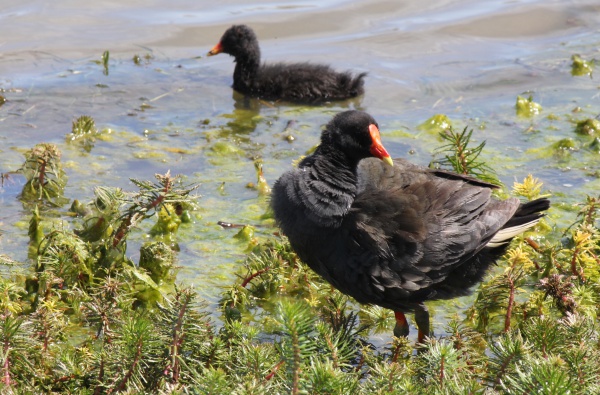Facts About Moorhen
Moorhens, or marsh hens, are medium-sized water birds belonging to the rail family and primarily classified under the genus Gallinula. They are closely related to coots and are sometimes referred to as gallinules. Notably, one species within Gallinula was recently determined to be distinct enough to warrant its own genus, Paragallinula, with the lesser moorhen as its sole member.
In Australia, native hens, often grouped under the genus Tribonyx, differ in appearance from typical moorhens. They possess shorter, thicker toes and bills, along with longer tails that lack white markings. Moorhens also appear in literature; Edgar Allan Poe, for instance, references marsh hens in his story "The Gold-Bug" while describing the ecology of Sullivan's Island.
These birds are primarily brown and black with white markings, which are usually visible when they feed near the edges of open water. Despite having short, rounded wings and being poor fliers, some species, such as the common moorhen, can migrate long distances. Conversely, the Gough moorhen is nearly flightless. Moorhens are omnivores, consuming a variety of foods, and while they are territorial during the breeding season, they often congregate in flocks around shallow, vegetated lakes.
The genus Gallinula comprises seven living and recently extinct species. Some former members, including the lesser moorhen and various native hen species, have been reclassified. Moorhens have an extensive evolutionary history, with fossils dating back to the Late Oligocene period. Early human settlement led to some extinctions, and it is believed that the genus originated in the Southern Hemisphere, possibly in Australia. The taxonomy and evolution of moorhens are well-documented, with ongoing research continuing to illuminate their evolutionary relationships and adaptations over time.
